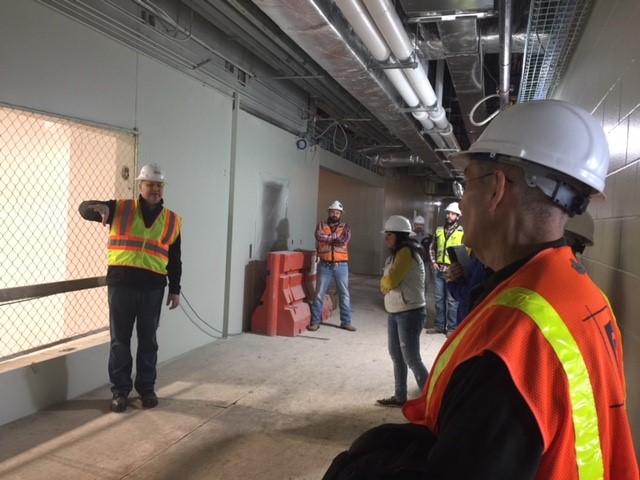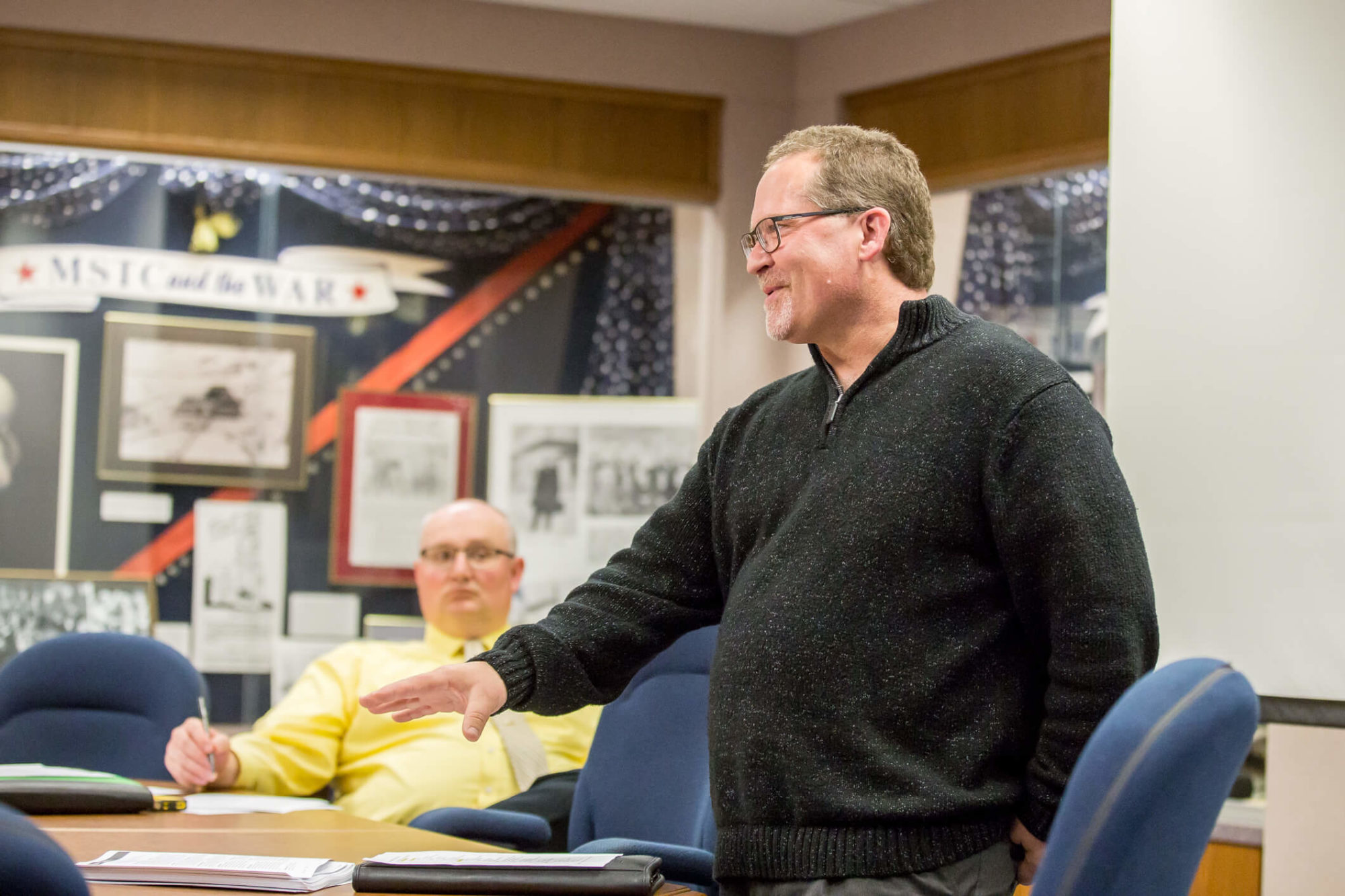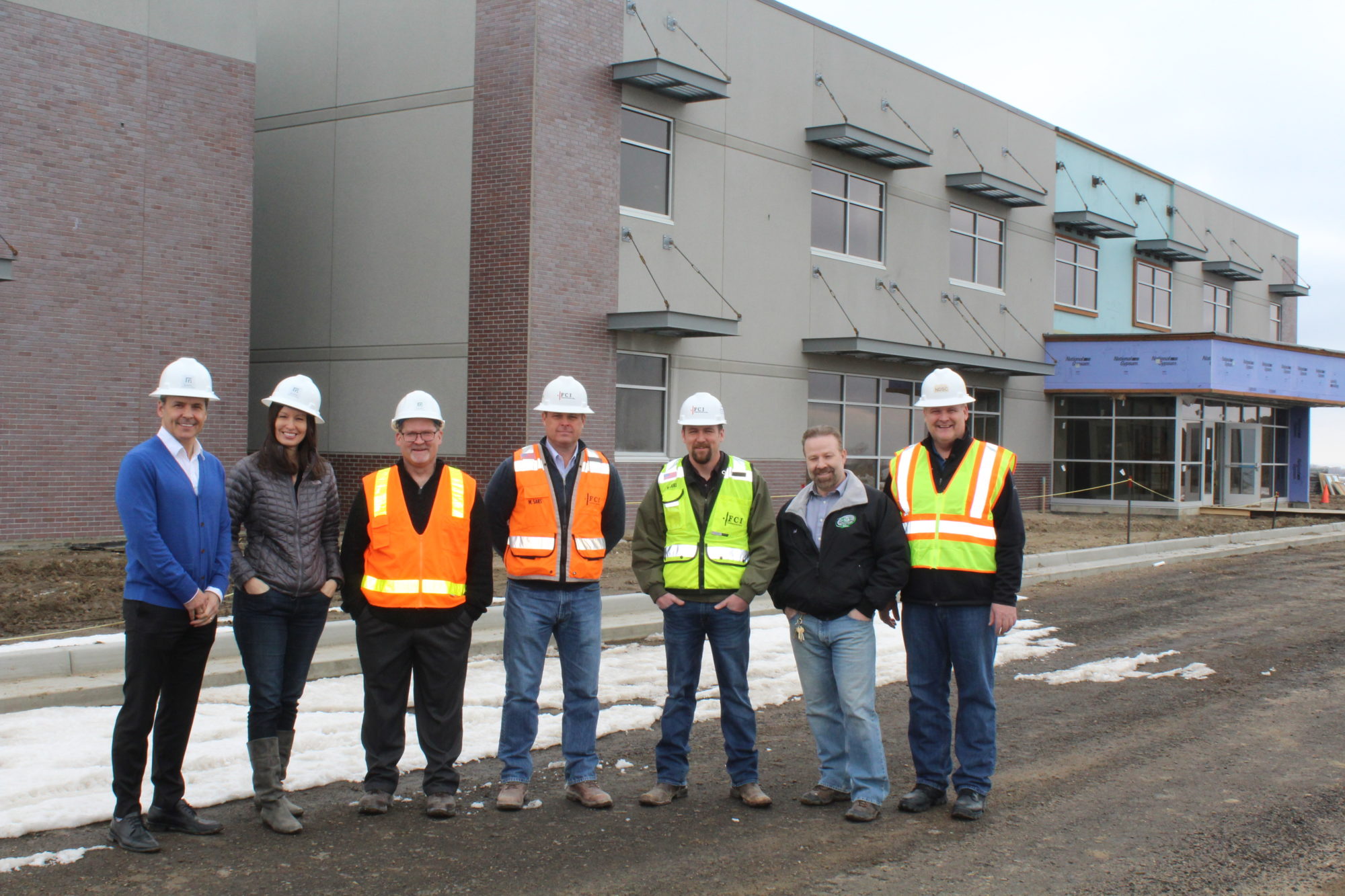EAPC and North Dakota Safety Council have partnered to offer schools facility design solutions and safety guidelines
School shootings have become a frightening reality across the country. Parents, students, and school administrators are looking for solutions to prevent this horrific possibility from happening in their location. EAPC Architects Engineers has recently partnered with the North Dakota Safety Council (NDSC) to offer professional guidance to schools that are building new or need renovation to their existing facilities.
Together with the North Dakota Safety Council (NDSC) and FCI Constructors, EAPC recently hosted a Design for School Safety Workshop at the Missouri Ridge school in Williston, ND, currently under construction. Per the NDSC, Missouri Ridge is identified as a school that is in the top five percent in the nation for school safety design.

As part of the two-hour workshop, area school district superintendents were given a tour of the new middle school by EAPC Design Architect Sean Sugden and Safety Trainer Don Moseman from the NDSC to learn important safety design measures that are critical to effective safety and emergency response. Moseman said the information EAPC is providing to leadership on school safety is “cutting edge” and stressed that “design safety education may not be happening anywhere else in the country.”

Moseman has taught more than 1,000 law enforcement courses and instructed over 30,000 people. He has studied more than 100 school and workplace shootings, has responded to three active shooter events, including the Columbine High School shooting in 1999. He has instructed nearly 200 Active Shooter and Violence Prevention courses in 24 states and conducted more than 240 emergency response assessments. He is a school approved instructor by the U.S. Department of Homeland Security.
Sugden has been the leading school design architect at EAPC, working with over 45 K-12 projects and with 17 school districts across the ND region.

Whether building new or renovating existing spaces, superintendents learned what design measures are important to mitigate the possibility of an active shooter event. They were given opportunities to ask questions throughout the walkthrough and Q&A, including sharing specific concerns within their own school.
The walkthrough highlighted the following important guidelines to maintain a safe learning environment in school buildings and grounds.
Entrance Control, Design, and Monitoring
The school should have only one entrance to gain access to the school during school hours. As students and visitors enter a school, they should encounter a buffer zone. This area is secured so people can be vetted for proper entrance into the school, then granted access. The area immediately inside and outside the main entrance should have the ability to be monitored. This can be accomplished with personnel or security cameras.
Number of Exits
U.S. Department of Homeland Security protocol states school emergency plans should be designed with evacuation first. This means the more exit routes and doors designed into any facility, the safer it will be.
Mass Communication System
The school must have a communication system that allows the instant notification of an emergency in the building. The system must be able to be seen or heard in every part of the facility.
Site Accessibility
Exterior landscaping and parking lots are intentionally designed to maintain visually open school grounds. Large landscape elements that could provide hiding locations are avoided, landscape elements are carefully placed to maintain clear views from the school and parking lots, and adequate lighting is incorporated throughout.
Security Cameras
Security camera systems are most effective at identifying a threat in real-time and mobilizing an emergency notification if they are monitored by trained staff. Cameras that simply record are useful for solving crimes and reviewing past events, but they cannot help staff members with a current ongoing event.
Masonry Walls
Masonry walls are utilized more often than drywall because of its strength and ability to limit penetration by gunfire.
Classroom Design
Classrooms should be hardened. This is accomplished through solid core doors with no windows, hinges on the inside of the doors and panic locks. If the room is located on the first floor and has windows, some layer of protection should be designed into the room to protect students from gunfire from the outside.
Multi-Purpose Areas
These spaces should not contain any fields of fire. These are elevated spaces where students or visitors have access to look down on large groups of people. For example, an elevated track around a gymnasium. If these spaces do exist, design elements must be constructed to limit the access and/or monitor the use. These large open areas must also be constantly monitored by cameras or staff.
Safe Room Plan
In addition to hardened classrooms, there should be designated safe rooms in the building. These are rooms having some ballistic protection, lockable solid core doors, and a communication system. Staff and students should be trained on the U.S. Department of Homeland Security active shooter protocol. In this system, if a student or staff member faces a blocked exit route, they would go to the nearest safe room to shelter-in-place.
Location of Windows and Glass
Windows on the first floor of any building should be tinted or have shades to prevent a potential threat from seeing clearly into rooms. Interior glass should not be installed in any potential safe room or classroom.
Circulation Route Management
Circulation patterns are designed with wide corridors and minimized hidden areas. Staff and teachers are strategically located with easy access to corridors to enhance visual supervision.
Small Offices for Local Law Enforcement
These offices can be incorporated into the building layout to provide a usable desk for paperwork.
There isn’t any greater concern in our schools today than providing safe buildings and environments.
“As real threats to our schools evolve and expand, we must look at how to intentionally create both active learning environments and address community concerns about safety,” said Sugden. “We can identify facility security vulnerabilities and implement long-term building design solutions for safer schools.”
As many superintendents are now looking for advice on increasing school security, EAPC and NDSC are proud to be part of the solution.
“What this security education is offering to schools is cutting edge,” says Moseman.
This partnership is looking to help as many school districts as it can, and ultimately, what can be more rewarding than keeping kids safe?
Watch the newscast that covered this workshop by KX News

Learn more about implementing design
safety measures into your school.